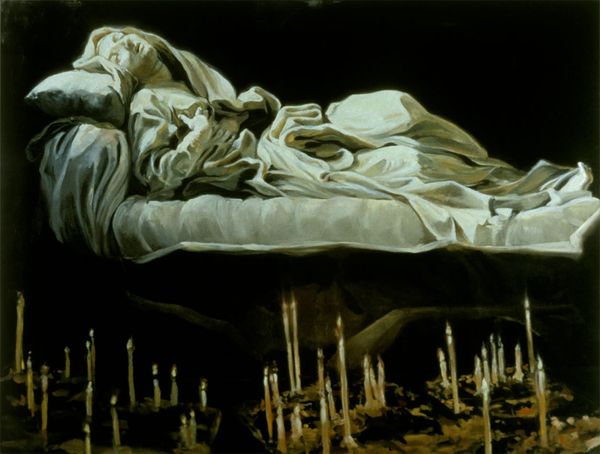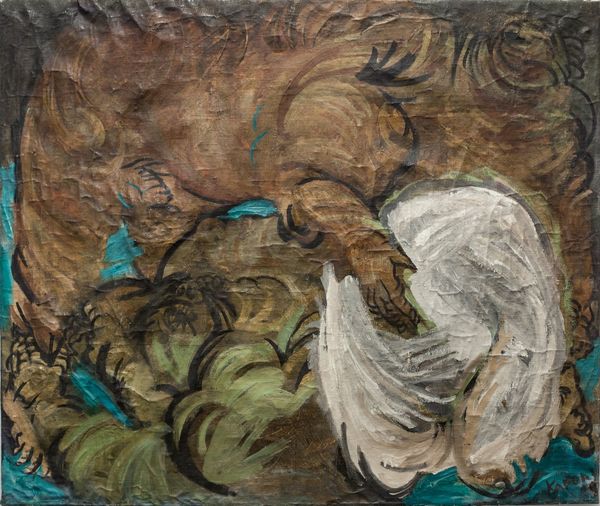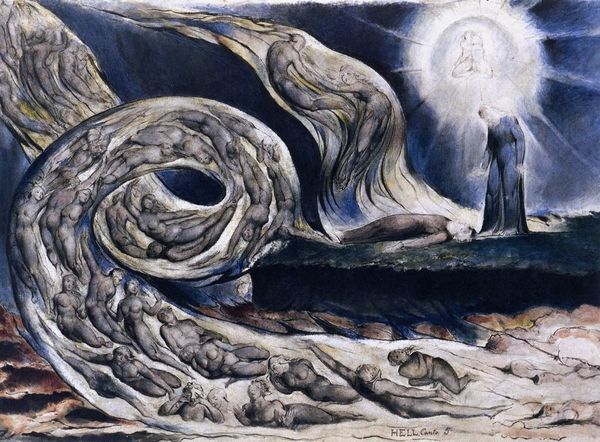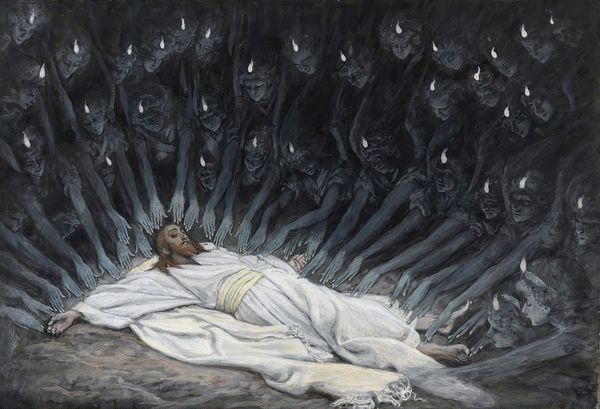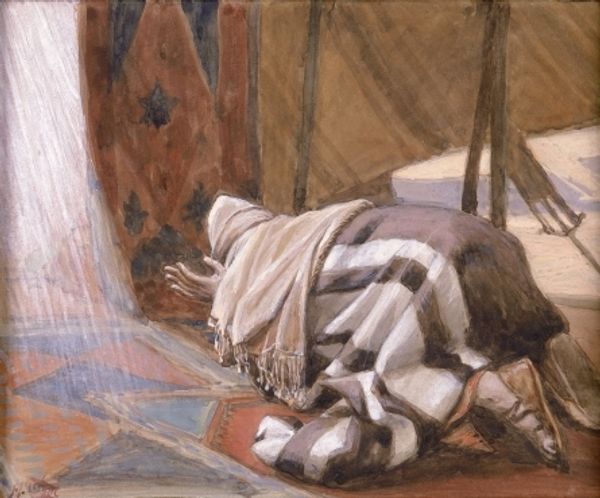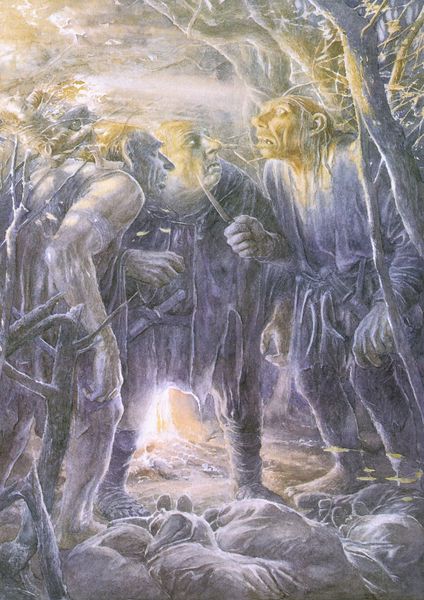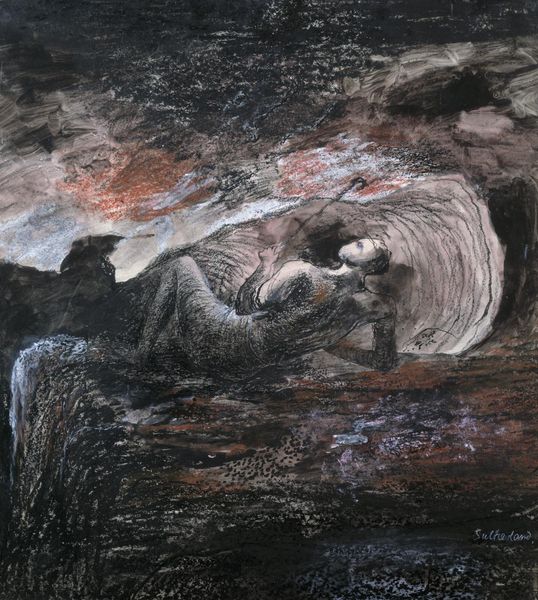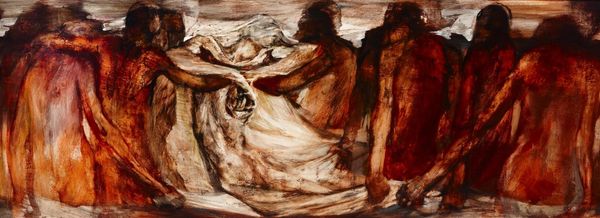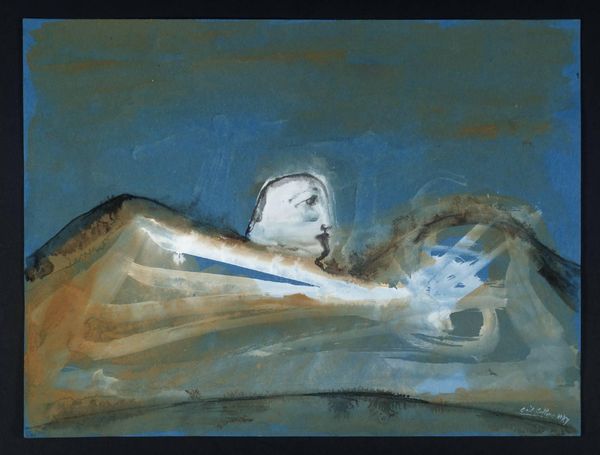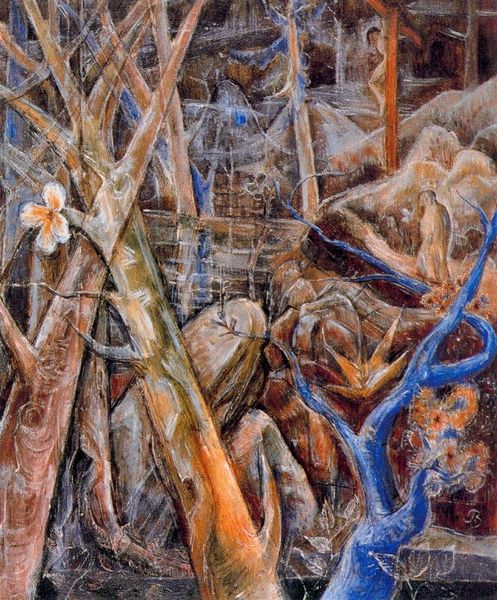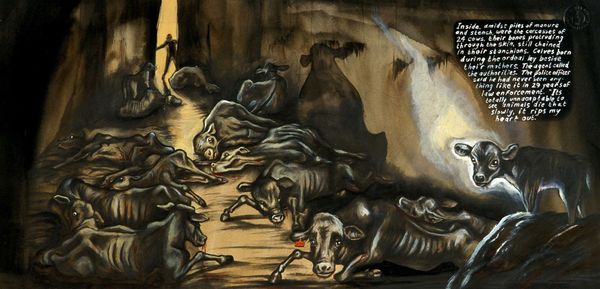
drawing, watercolor
#
drawing
#
narrative-art
#
oil painting
#
watercolor
#
symbolism
#
watercolour illustration
#
history-painting
#
academic-art
#
watercolor
Copyright: Public Domain: Artvee
Editor: We’re looking at James Tissot’s watercolor "The Grotto of the Agony," created between 1886 and 1894. The figures almost seem to float, the colour palette adding a ghostly feel. What draws your eye, and how would you interpret this work through a formal lens? Curator: Note how Tissot orchestrates the composition to guide the viewer's gaze. The focal point is the figure of Christ, horizontally oriented at the bottom. Above, the artist introduces a celestial array of figures; they serve a dual function. The angels function both as compositional counterweights and symbolic presences. Consider how Tissot uses light, not realistically, but as an emotional signifier. It streams down, creating distinct vertical rhythms. What is the impact of using watercolor, considering the narrative being portrayed? Editor: It softens the scene. An oil painting might have made it too harsh. The flowing medium echoes the spiritual anguish, somehow? Curator: Precisely. The fluidity mirrors the emotional turbulence, dissolving rigid forms. And what about the curious orbs held by the angels? Do they distract, or add a deeper narrative layer, considering their distinct lack of realism? Editor: The orbs – almost like bubbles – containing miniature scenes of the crucifixion...they do provide visual access to narrative elements. Curator: Yes. Tissot creates a visual hierarchy, almost as if the entire history has become internalised for the prone figure. So, through his considered composition, his delicate control of light, and the intriguing motif of the orbs, we can appreciate the image as not simply an illustration but as a sophisticated essay on suffering. Editor: It's amazing to see how much the formal elements amplify the emotion of the scene. Curator: Indeed. It is in the interplay of colour, line, and composition that Tissot truly unlocks the depths of human experience, transcending a literal depiction of an iconic narrative moment.
Comments
No comments
Be the first to comment and join the conversation on the ultimate creative platform.
